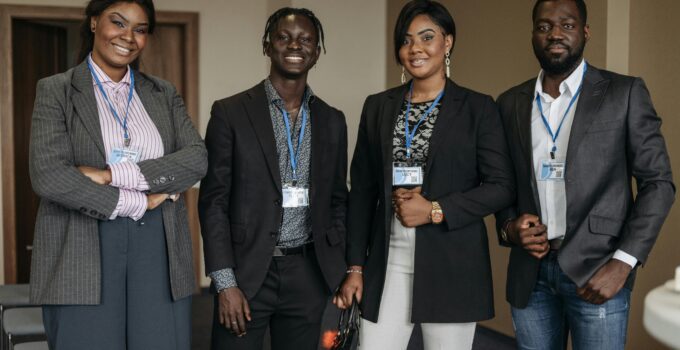In the competitive business world, organizations constantly seek to identify and cultivate strong leaders who can drive growth, inspire teams, and guide their companies to success. Scientifically validated assessments—whether they evaluate cognitive abilities, personality traits, or job compatibility—can help organizations identify high-potential employees and provide them with the resources they need to grow into effective leaders. Below are nine key ways that employee assessments can be used to develop leadership potential: 1. Identifying leadership traits early Employee assessments provide a structured way to identify key leadership traits in employees early on. Emotional intelligence, resilience, decision-making ability, and interpersonal skills are
In today’s competitive job market, resumes and interviews alone often fail to provide a complete picture of a candidate’s true potential. Scientifically validated assessments offer a more structured and objective approach, assessing cognitive abilities, personality traits, and job compatibility to help organizations build high-performing teams. These assessments are not limited to the hiring process—they also play a vital role in employee development, leadership training, and team building. Below are nine reasons why the science behind these assessments makes them a powerful and indispensable tool for both employers and employees 1. The psychology of employee assessments Employee assessments are deeply rooted
As the new year unfolds, organizations have a prime opportunity to renew their commitment to growth and innovation. A culture of continuous improvement is not built overnight; it requires intentional actions, ongoing evaluations, and the willingness to adapt. Organizations can foster a workplace culture that values progress and excellence by making assessment-driven resolutions. Here are nine key resolutions to inspire continuous improvement through regular and meaningful assessments. 1. Commit to regular feedback loops Feedback is the lifeblood of improvement. Organizations should resolve to establish consistent feedback mechanisms, such as weekly check-ins, quarterly reviews, and employee engagement surveys. These tools allow
As organizations gear up for a new year, the importance of aligning goals across all levels cannot be overstated. Whether you’re a small startup or a multinational corporation, ensuring that individual, team, and organizational objectives are in harmony is crucial for driving success. Assessments—both formal and informal—play a vital role in achieving this alignment, providing actionable insights and fostering a cohesive work environment. Here are nine key ways assessments can help align goals for 2025: 1. Establishing a clear vision and mission Assessments provide a foundation for revisiting and refining an organization’s vision and mission statements. By soliciting feedback through
In any organization, employee performance is a driving force behind success. When performance issues go unaddressed, they can escalate, leading to decreased productivity, reduced morale, and higher turnover. That’s why HR professionals need to identify and address performance gaps early. Below are nine critical strategies for assessing performance issues before they become major problems: 1. Regular check-ins for early detection Instead of relying solely on annual performance reviews, regular check-ins allow managers to monitor employee performance more closely. These frequent conversations create opportunities to identify issues early on and provide timely feedback. By discussing progress and obstacles regularly, managers can
As the year draws close, businesses and organizations reflect on their achievements and challenges to chart a path forward. Among the tools that leaders can use to set the stage for a stronger team, end-of-year assessments hold immense value. These evaluations review past performance and provide a framework for growth, alignment, and success in the upcoming year. Below, we explore nine key ways end-of-year assessments can strengthen your team. 1. Spot hidden talent End-of-year assessments are an excellent opportunity to recognize employees who consistently excel. High performers may not always be in the spotlight, but their contributions are vital to
In any organization, employee performance is a driving force behind success. When performance issues go unaddressed, they can escalate, leading to decreased productivity, reduced morale, and higher turnover. That’s why HR professionals need to identify and address performance gaps early. Below are nine critical strategies for assessing performance issues before they become major problems: 1. Regular check-ins for early detection Instead of relying solely on annual performance reviews, regular check-ins allow managers to monitor employee performance more closely. These frequent conversations create opportunities to identify issues early on and provide timely feedback. By discussing progress and obstacles regularly, managers can
Competency-based assessments have emerged as a powerful tool, allowing organizations to evaluate and develop employees in alignment with business goals. By focusing on the skills, knowledge, and behaviors that directly support organizational growth, these assessments foster a high-performing workforce and encourage continuous improvement. Below are nine ways these assessments can benefit your organization and offer guidance on creating tailored competency frameworks. 1. Understanding competency-based assessments Competency-based assessments are designed to evaluate employees based on the specific skills, knowledge, and behaviors needed for success in their roles. These assessments focus on what employees are doing and their ability to perform essential
Employee assessments are vital for understanding individual performance and potential, but to be truly effective, they must balance hard skills—technical abilities—and soft skills—interpersonal attributes like communication, teamwork, and adaptability. Here’s why both matter and how to incorporate them into assessments: 1. The importance of both skills Hard skills are specific, measurable abilities required for tasks like coding, data analysis, or project management. Soft skills, such as emotional intelligence, collaboration, and problem-solving, define how well employees work with others and handle challenges. Both types of skills are essential for overall success, as technical expertise alone may not suffice without the ability
With industries constantly changing due to technological advancements, economic shifts, and global challenges, businesses need employees who can thrive in uncertainty. As organizations strive to build resilient workforces, human resources professionals are turning to assessments to identify candidates and employees who excel in adaptability. Below are nine critical points on how assessments are vital in building a workforce ready to face future challenges: 1. Importance of adaptability in modern workplaces The modern work landscape is constantly changing, driven by innovations like automation, remote work models, and artificial intelligence. In this climate, organizations require individuals who can adjust to new responsibilities,










